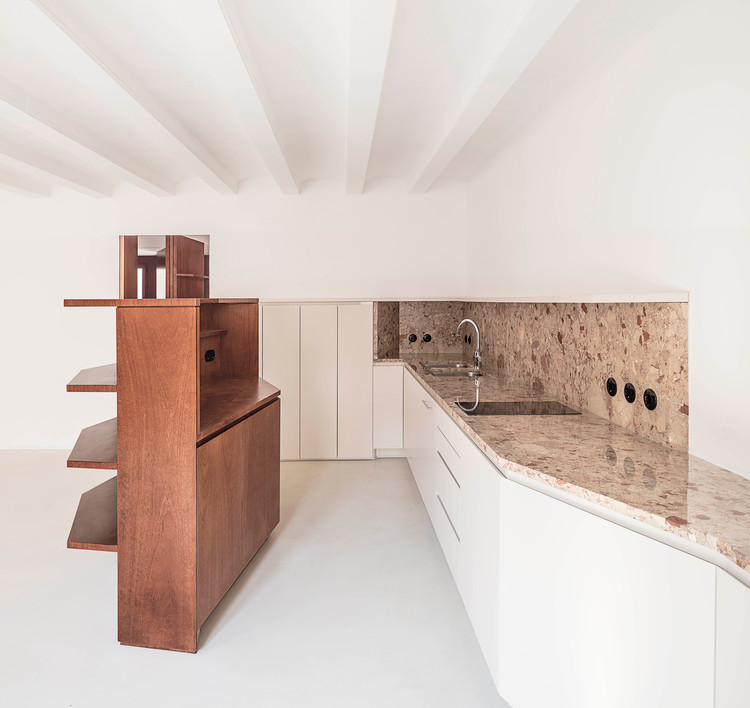
-
Architects: h3o architects
- Year: 2019

Text description provided by the architects. The refurbishment of a “Loft not Loft” in Parlament Street in Barcelona, or how to fill a white canvas with “movables” (furniture) of sinuous shapes that define living spaces.

























